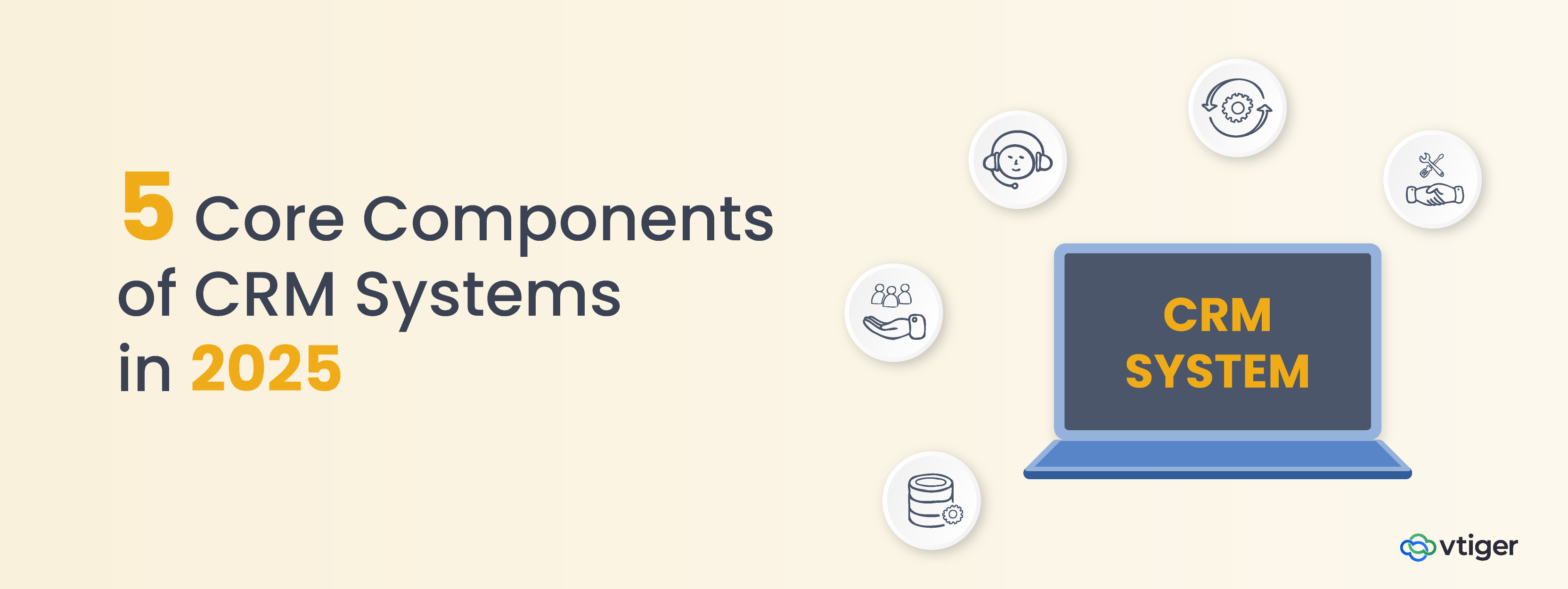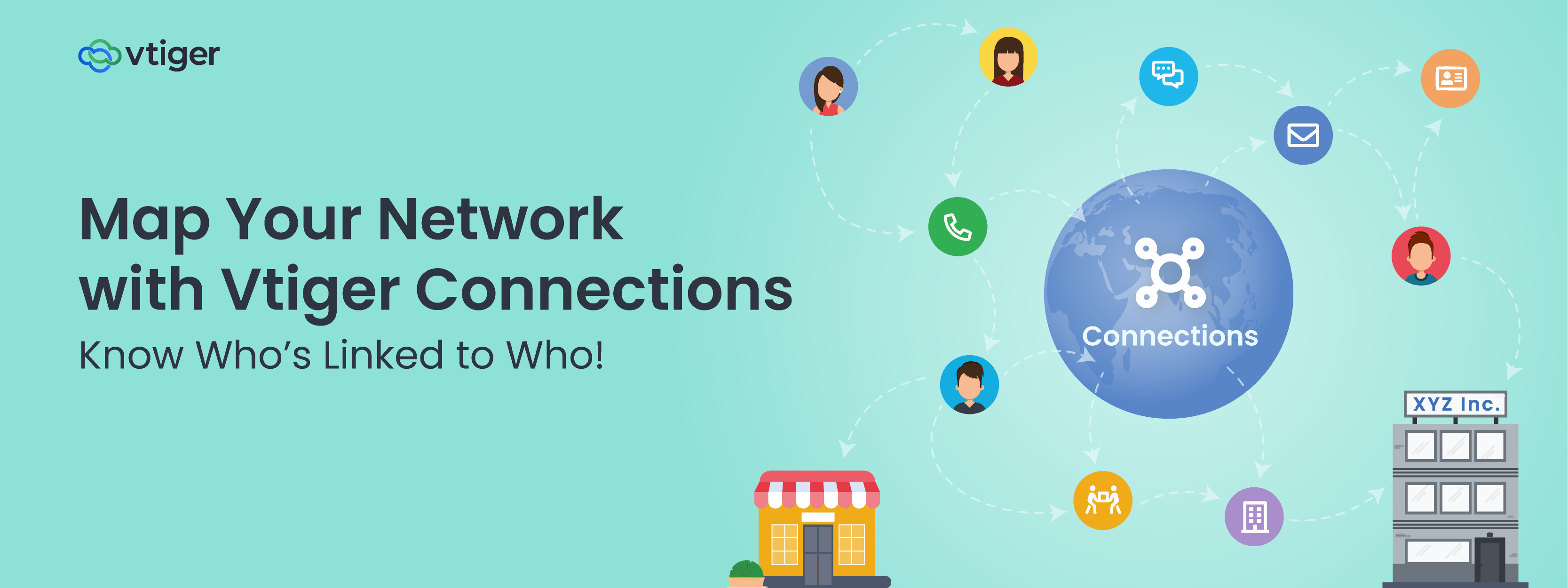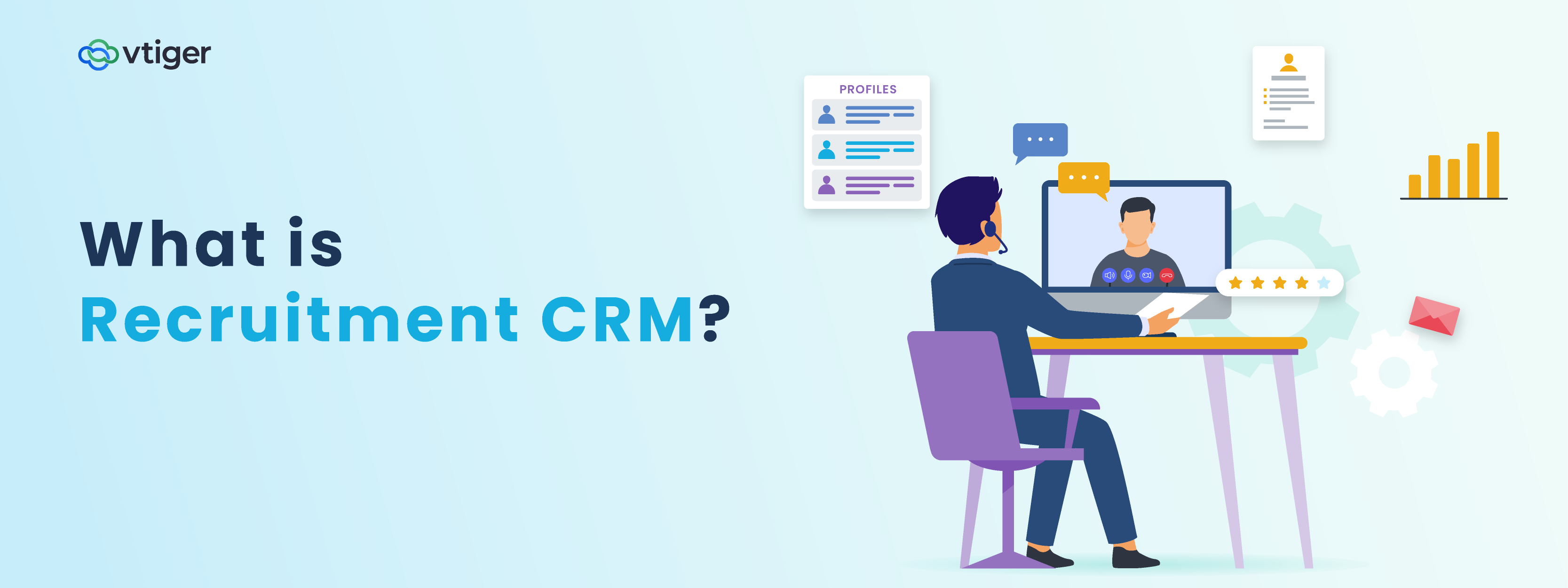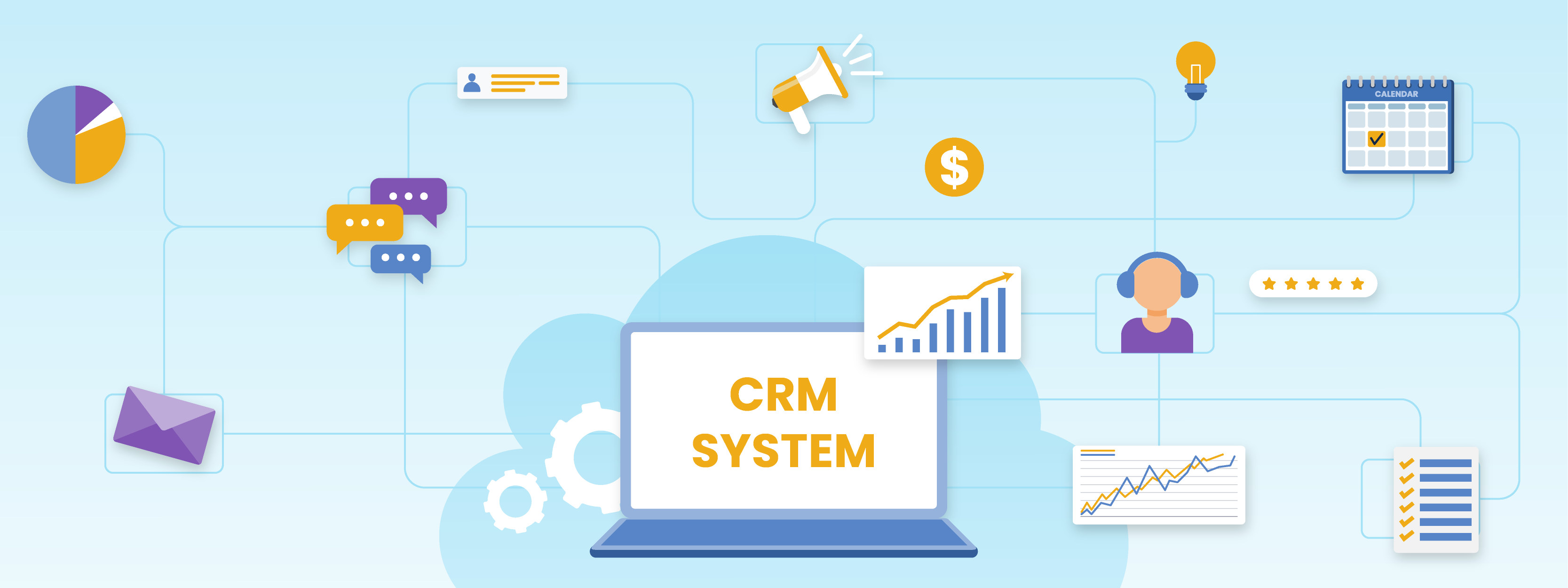Have you ever thought about how some businesses manage to keep their customers happy? Do you know how they feel when they are given better service? If you are a business owner, you should ensure that you build a close and strong relationship with your customers throughout their journey to create a strong reputation in the market.
Wondering how to build a strong bond? Well, the secret lies in having a customer relationship management (CRM) system. CRM software is used by almost all businesses to manage customer relationships and streamline business operations. And, by using different CRM components, you can even transform the way you engage with your customers and create long-lasting impressions.
So, what are CRM components? They are nothing but a bunch of tools or features within your CRM that can assist you with your daily operations. If a CRM is just for recording data, then a simple spreadsheet would do it.
But, a CRM is much more than a data hub – it offers a ton of features to carry out core activities such as lead management, tracking the sales pipeline, running marketing campaigns, and more. It is leveraged by core departments in an organization such as sales, marketing, and customer support.
Here’s a closer look at the top 5 components of a CRM to understand in detail
5 Core Components of Customer Relationship Management (CRM)

According to a report by Statista, the revenue for the customer relationship management software market is forecasted to reach US$98.84bn in 2025. As more businesses have turned to using CRM, let us explore the components of CRM below:
1) Customer Data Management
It is the founding structure of a CRM system that allows you to record a multitude of customer data ranging from a customer’s primary information to interactions and purchase preferences. Without a robust data management strategy, it is difficult to deliver personalized experiences and make smart decisions.
Customer data influences the working of different organizational functions. Using accurate and updated data, you can understand buying patterns, segment customers based on their needs and wants, anticipate future trends, and more. All this will help you build strong customer relationships and loyalty.
Use Case: Let’s suppose you are running an online jewellery store. Using robust CRM software, you can monitor customers’ buying patterns from previous purchases and, based on that, send them personalized recommendations. This can optimize sales and make your customers visit you again and again.
2) Customer Interaction Management
Track every interaction with your customers and ensure everything is documented and accessible to everyone in your organization. Whether you are contacting customers through emails, phone calls, chats, or social media, you can collate every communication in a centralized hub and serve your customers effectively.
Businesses can integrate communication tools into the CRM to consolidate interaction history, and using this, you can identify their pain points and improve engagement strategies.
Use Case: A travel agency uses CRM records for every customer conversation. So, if a customer inquires about a travel package that they made last month, the agent can continue the conversation without making the customer repeat everything they said.
3) Sales and Marketing automation
Leverage AI to automate repetitive activities and allow your teams to focus on more complex activities. You can automate lead nurturing and scoring, send bulk email campaigns, set up event reminders, and even do sales follow-ups by setting up different workflows.
For instance, if your lead downloads an e-book from your website, the CRM can automatically send relevant or related content, invite them for a webinar, and finally send a personalized email with offers or discounts by setting up CRM workflows. This will reduce the manual effort and ensure that no potential leads are missed.
Use Case: A tech company uses an automation feature in a CRM to nurture leads. If a potential lead downloads a whitepaper or an eBook, the system automatically sends a follow-up email for a 15-day free trial to improve conversion chances.
4) Customer Support and Service
Customer support is another big component of CRM. It can allow you to deliver excellent customer service and set you apart from your competitors. This is crucial for improving satisfaction rates and optimizing customer experience.
You can provide immediate assistance by analyzing historical data like the number of queries raised and resolved, feedback, and more. Also, deploying AI chatbots will reduce the workload of human agents in handling day-to-day queries. Some organizations integrate self-service portals into the CRM, allowing customers to find solutions on their own.
Use Case: An e-commerce platform receives thousands of inquiries daily, ranging from order status updates to return requests. To manage this volume, they have deployed an AI chatbot that responds to messages coming from different channels, reducing the need for human agents. Besides, they use the support module in their CRM to track and analyze previous interactions and identify frequently asked questions. This streamlines the creation of standard operating procedures (SOPs) for resolving recurring queries.
5) Collaborative Tools
These are designed to help core team members, such as sales, marketing, and customer service, work together seamlessly. You can centralize communication history and ensure all departments are on the same page to help you deliver a unified customer experience.
Reduce silos between departments, improve response time, drive personalization and enable cross-functional collaboration for better customer engagement.
Use Case: The customer support team at a bank logs every interaction in their CRM. This helps the marketing team to review customer profiles like customers’ income based on their salary deposits, credit scores, etc. With seamless data sharing, different teams can engage with customers independently without relying on each other.
How to Optimize CRM Components?
If you are able to carry out your business operations seamlessly, it indicates that your CRM tool is working effectively. To take maximum advantage of a CRM’s potential, it is essential to optimize its components. Let’s dive deep into the key strategies for optimizing CRM components.
1) Automate tasks
By automating your core business processes with the help of AI, you can shift your focus to building customer relationships and get involved in the decision-making process.
Why does it matter?
- Increase efficiency and Productivity: If you program your CRM to send automated follow-ups, event reminders, etc., you can boost your team’s efficiency and reduce manual errors.
- Maintain consistency: Make sure all your interactions remain consistent throughout a customer’s journey to improve the experience. This means that regardless of where a customer interacts with you, be it social media, website, or any other channel, you can maintain consistency in messaging, tone, and quality of service that aligns with your brand’s value.
2) Integrate with third-party tools
Depending only on CRM is not enough. You need to integrate external tools such as accounting software, marketing automation, conversation tools, etc., for specific activities.
Why does it matter?
- Gain holistic information: You can enable data sharing to and from the CRM. By combining data, gain a holistic view of customers and understand their preferences in a better way.
- Reduce toggling between apps: Integrating external apps with CRM allows you to manage your activities from a single window. Reduce switching between different applications and streamline your operations by keeping everything in a single place.
3) Create a unified data entry system
Having a unified data entry means recording customer information in a standardized format. When you have a consistent method, you can maintain a more organized and efficient CRM system.
Why does it matter?
- Improve data accuracy: With data standardization, you can reduce errors or inconsistencies and ensure every customer’s information is accurate and up to date.
- Enhance efficiency: A centralized system allows employees to spend less time searching for information and they can focus on other important activities.
- Understand your customers: Consistent data collection and storage can offer a comprehensive customer view and allow you to offer personalized services.
4) Use Reporting and Analytics
Analyze marketing trends and customer behavior, and monitor performance to tailor your business strategies accordingly. You can generate live reports and make informed decisions to take your business to the next level.
Why does it matter?
- Make Intelligent Decisions: By processing the data and taking insights, you can make strategic growth plans and allocate resources thoughtfully.
- Get customer insights: Understand how customers perceive your business and get to know their preferences.
- Track core metrics: Evaluate important key performance indicators (KPIs) and analyze the effectiveness of sales marketing activities.
Case Study: How CRM components impacted Lego’s Business Operations?
Lego, a leading toy manufacturer based in Denmark, is one of the most recognized toy brands in the world. Do you want to know why?
It is because Lego leverages CRM to gather customer data and strengthen relationships. The CRM software has helped Lego become a powerhouse in the market. It is mainly used to drive personalization and growth.
One great example of Lego’s personalization technique is the VIP Loyalty Program. Customers earn points for making purchases, which can be redeemed on future purchases, encouraging repeat business and improving trust and loyalty.
Now, let’s take a look at how Lego uses each CRM component to streamline its activities:
- Lego collects a wealth of customer information from different sources, like social interactions, community forums, online purchases, etc. This centralized data hub allows Lego to build in-depth customer profiles and customize services accordingly. According to Mckinsey, personalization can drive ROI by 15% and increase sales by 3-5%. Lego’s personalization strategy helps significantly boost conversion.
- Lego CRM captures customer conversations from live chats, emails, and other touchpoints to offer a cohesive experience. With all information readily and easily available, core teams can communicate with customers smoothly.
- Lego runs automated, AI-driven marketing campaigns that are tailored to specific locations, age groups, and purchase histories. They use workflows to nurture leads and re-engage with them for conversions.
- Lego’s support handles over 3 million queries each year across six global contact centers from LEGO fans in over 22 different countries. This is made possible with AI chatbots and well-trained human agents, allowing them to deliver instant support and reducing friction in the customer journey.
- Every department at Lego- from marketing to product development, has access to real-time data. This collaboration empowers them to share insights during the decision-making process and provide a world-class customer experience.
Bottom Line
CRM is not just an application or a tool but a powerful strategy to drive business growth and revenue. By understanding its core components, you can manage your day-to-day activities, improve customer relationships, optimize collaboration and more. The success lies in aligning these components with your future goals and thriving to stay ahead in the competitive market.
Frequently Asked Questions
The main components of CRM are customer data management to collect and store information, customer interaction management to track and centralize important conversations, sales and marketing automation to automate repetitive tasks, customer support and service to improve service delivery, and finally, collaborative tools to facilitate team collaboration.
CRM can improve customer retention by providing a consistent and personalized experience. This can be achieved by analyzing detailed customer profiles available in the CRM and taking proactive steps to streamline communication, resolve issues, and offer targeted discounts.
CRM systems often come with in-built marketing tools such as email marketing automation, lead scoring and nurturing, social media and a dashboard.
Check out these additional resources to learn more about CRM systems:



